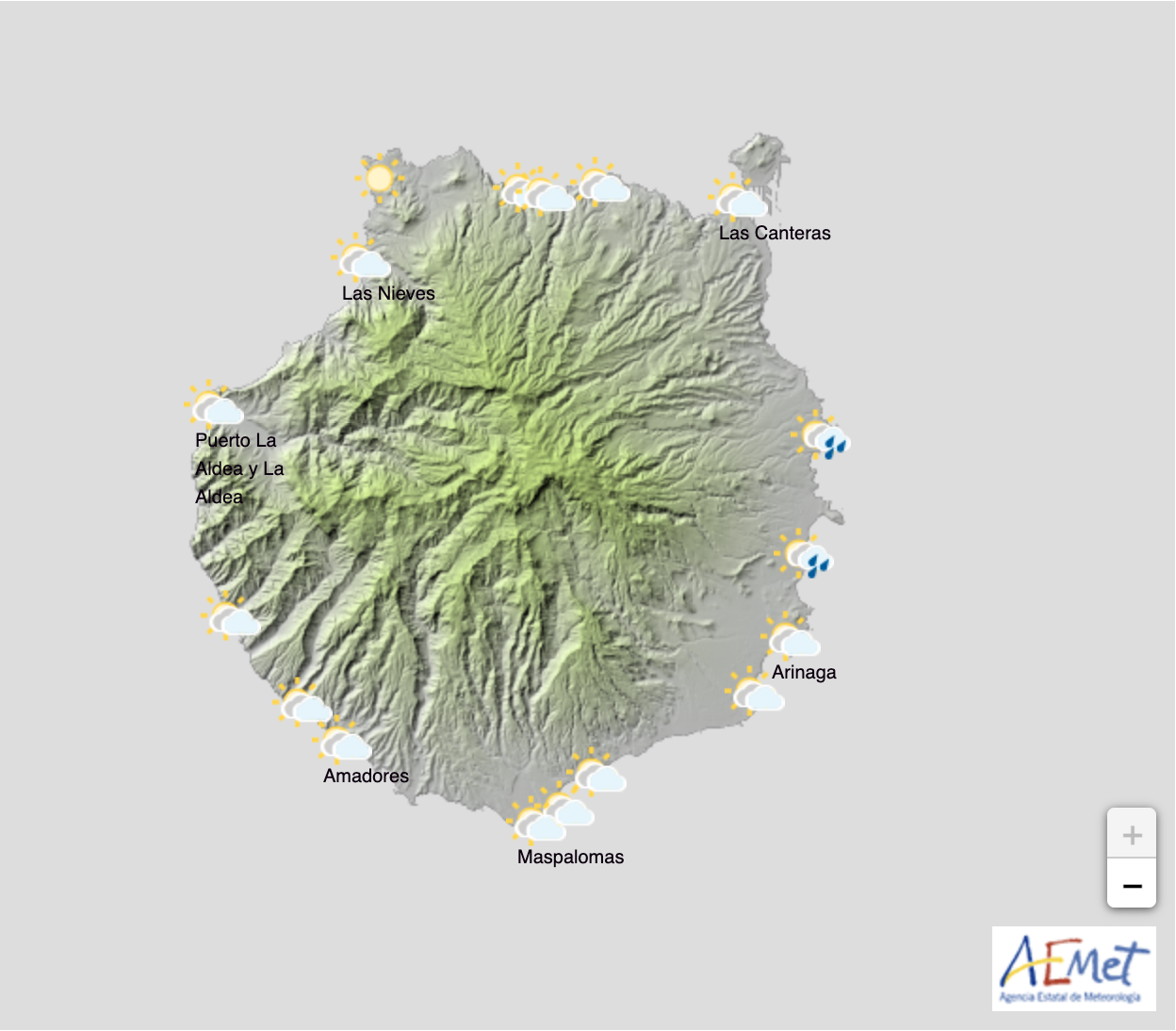Spanish State Meteorological Agency (AEMET) has announced their forecast of a new “very unusual” warm spell for this time of year in the Canary Islands. Meteorologists have not ruled out that the end of October will make it the hottest October in Spain since records began. “Clearly warmer than normal conditions are likely to continue into the first half of November ,” they have warned.
According to AEMET, thermometers could reach up and over 30°C in the shade in The Canary Islands over coming days at some points around the archipelago, where Calima dust haze is expected at height to raise temperatures by between 5 and 10°C over seasonal norms.
El EFI (Extreme Forecast Index) de temperaturas máximas nos da una idea de lo inusualmente altas que se prevén las máximas hoy y los próximos días en #Canarias : pic.twitter.com/ShLHIicZbW
— AEMET_Canarias (@AEMET_Canarias) October 27, 2022
 One of the warmest autumns on record for Spain
One of the warmest autumns on record for Spain
Thermometers are going to hit values more typical of the month of June than the end of October, according to the meteorologists of eltiempo.es. This autumn is going to see one of the warmest Octobers on record.
This Wednesday there was a new rise in maximum daytime temperatures, concentrated especially in areas of the southwest mainland and Catalonia. In turn, minimum night time temperatures also rose a few degrees in most of Spain. Maximum temperatures exceeded 30ºC in the Guadalquivir valley, and could exceed the 32ºC in places like Seville, Córdoba and Jaén. For comparison, these would be normal values for the first half of June. Thermometers approached 30ºC also in Murcia, some points in Castilla-La Mancha and the Balearic Islands. And look likely to hit around 26ºC or above in Barcelona, Zaragoza, Bilbao or Santander.
Thursday has seen the most abnormally high temperatures of the week. Already temperatures typical of tropical nights are being recorded, with night time thermometers above 20ºC in San Sebastián, Bilbao, Santander and on the Mediterranean coast, especially in Andalusia. These minimums are especially relevant because the norm would be usually around 10 to 12ºC minimum along most of the Cantabrian coast at this time of year.
Meanwhile, over the weekend temperatures will likely remain similar to Thursday throughout most of the country, although they could drop in some areas of the central and southern half of the Iberian Peninsula.














